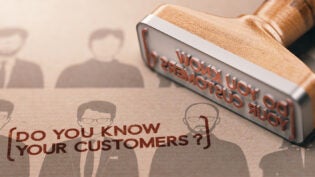
Attention spans are growing shorter by the second
Studies have shown that attention spans for engaging a reader or listener have fallen from eleven seconds to eight seconds on average. Eight seconds to reach someone in most any medium. Ouch!
Growing weary of paid advertisements
We have grown more than a bit weary of most advertising, no matter in what form. We are constantly bombarded by ads in multiple types of media, to the extent that we most often tune them out unless particularly entertaining from the first moment (eight seconds).
Entering the “age of recommendation.”
In my keynotes on trends in technology, I often lead into one of the trends with the proposition that we have left the information age and are solidly within the age of recommendation, pointing to the fact that 69 percent of us research major purchases online before buying; 62 percent look at online peer reviews and 39 percent of us compare prices across outlets. I make the point that this is good for consumers, because it creates an environment where there is much more consumer pull—and less producer push—in our new world of connectivity and transparency.
How do you reach this hyper-conscious audience?
How do you reach an audience that pays less attention to advertising then at any time in the past one hundred years? Given the statistics quoted above, you must find ways to have your consumers endorse your product publicly, and in a form that is divorced from looking like an advertisement.
Using new tools in a social age
There are several ways to do this effectively, including the use of social networks to create buzz, seeding product acceptance through early adopters or celebrities, or by creating a small niche market that shows unusual acceptance and more. People are more trusting of unknown third parties endorsing your product that they are of direct ads touting the benefits of the product in large, clear type.
The case study: the best way to reach your target
And the best way to do this is with the placement of a case study, a story told about and by a satisfied customer with something to say about how your product solved their problem or pain. That story can be in print or in multimedia form. But it must be told about and by the customer, with your product as the tool of solution, not the focus of the story. A good case study quickly lays out the pain, the players, the search, the solution, and the pain-reliving effect after implementing the solution.
All of us can identify with a successful solution to a painful problem. And some number of readers will identify directly with the problem as their own and be moved to act. The only named solution will have been yours. And that’s delivering power at the right moment to the right recipient.
Advertising money moves to the most rewarding media
Over the years, advertising money is being moved from display ads in magazines and newspapers to social network sites where people with eyeballs have migrated. But people still read, hear and see stories they can identify with, and content providers still need content. Where content providers or publishers push back when seeing a press release, many will embrace a good story demonstrating a painful problem and a happy ending. And as a result, more money is flowing into story-telling.
Particularly for companies with limited marketing budgets, case studies are perhaps the most effective marketing tool available for the cost—other than just lucky or skillfully-ignited buzz.












